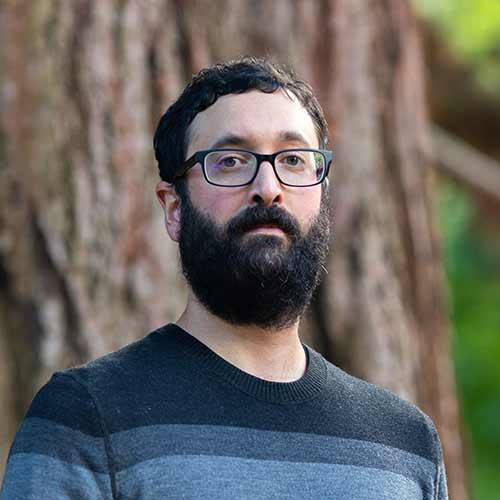Photo by Daniel Tankersley
I Know This Frog
Hey, I know this frog! A Pacific tree frog. We met decades ago when I was a child at a campsite on the other side of this mountain view lake in the Central Oregon Cascades. It’s a shore of settled dust—coarse, exfoliating grains—from the nearby Mazama volcano whose hollow now holds the deepest freshwater on this continent. People watched the eruption about 8,000 years ago. Did their eyes positively devour that light, like the bottomless ones on this little amphibian? Crescent Lake’s holding capacity swelled dramatically over the past hundred years as human efforts and infrastructure converted the natural pool into a vast reservoir. Now the lake is low. Extreme drought, plus the resource demands of a booming population around the city of Bend have caused the shoreline to recede close to its former silhouette. A drier lake means fewer growling outboards and a lot more sandy beach. But the wetlands around the fringe where frogs hatch have shrunk. Released from a concrete dam at the crescent’s north tip, some of the truant water is meant to hydrate habitat for other frogs downstream. Pacific tree frogs’ familiar chorus resounds seasonally throughout the region. Oregon spotted frogs and Cascades frogs also live around here, though disease and other pressures have decimated their numbers since the early 1990s. Back at an age more susceptible to timeless afternoons, I could easily catch the young ones, newly frog-shaped yet still betailed, in the palm of an outstretched hand, jumpy and abundant as they were. Today I recognize an old friend, celebrate that both our ilk still exist, acknowledge the disruptions endured since we last crossed paths, and know the biggest changes are probably still to come.
Daniel Tankersley teaches art and design, and serves as Creative Arts Division Chair at Western Oregon University. He works in a range of media, including photography, sound, interactive installation, woodworking, experimental animation, and digital printmaking. His art often focuses on land use and landscape, reflecting upon the role language plays in influencing experiences and ideas of nature.